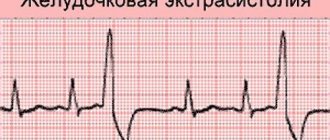Diabetic nephropathy is a disease in which thickened tissue forms in the capillaries of the kidneys and kidney failure develops. One of the factors causing this disease is an increase in pressure in the capillaries of the kidneys.
The main cause of the disease (diabetic nephropathy) is excess glucose, as it causes destruction of the walls of blood vessels and leads to their permeability. Structural changes occur in all organs.
As practice shows, mortality with type 1 diabetes is much higher from kidney diseases than with type 2 diabetes, in which death occurs from heart and vascular diseases.
Diabetic nephropathy. Symptoms of the disease and its stages
Contents
hide
1 Diabetic nephropathy. Symptoms of the disease and its stages
2 Possible causes of nephropathy and diagnosis 2.1 Diabetic nephropathy. Treatment
Stage 1 – hyperfunction. It appears at the very beginning of the development of the disease. The cells of the kidney capillaries grow, and the process of filtration and excretion of urine increases. The protein in the urine is within normal limits and there are no external signs of the disease.
Stage 2 – the beginning of structural changes. It usually appears within 1.5-2 years from the moment diabetes is diagnosed. The walls of the renal vessels thicken, but the protein in the urine is still within normal limits. There are no symptoms.
Stage 3 – the onset of the disease and the diagnosis of diabetes mellitus. The protein standard is several times exceeded, which means the kidney capillaries are damaged. The speed and amount of blood filtered changes. There are still no symptoms.
During these three stages, it is still possible to prevent the development of the disease.
Stage 4 – pronounced stage. Basically, it manifests itself ten to fifteen years after the initial disease of diabetes. The protein concentration in the blood decreases and in the urine increases, which leads to swelling. In this case, diuretics have no effect, the patient loses weight, weakness, nausea and constant thirst appear. The pressure increases sharply.
Stage 5 – uremic. The end of the disease. At this stage, the kidney vessels are completely condensed, there is no excretory function of the kidneys, glomerular filtration slows down to 10 ml per minute. At the same time, the symptoms of the previous stage remain, which leads to a threat to life. At this stage, the only way to prolong the patient’s life is replacement therapy.
1.What is diabetic nephropathy?
Nephropathy
is a kidney disease.
Diabetic nephropathy
means that kidney problems are caused by diabetes. In severe cases, diabetic nephropathy can lead to kidney failure.
The kidneys contain many tiny blood vessels that filter the blood. High blood sugar due to diabetes can destroy these blood vessels. Over time, the kidneys cannot cope with their work, and sometimes stop working completely. Then kidney failure
. It is worth knowing that not all people with diabetes develop diabetic nephropathy. Why this is so is still not known exactly.
Several factors increase the likelihood of diabetic nephropathy.
If you have high blood pressure, high cholesterol, or smoke, your risk increases.
A must read! Help with treatment and hospitalization!
Possible causes of nephropathy and diagnosis
When glucose levels increase, it begins to poison human organs. Filtration in the kidneys is worse. As a result, blood flow weakens, sodium ions accumulate in it, causing vasoconstriction, leading to increased pressure and kidney damage. There are three theories about the development of the disease:
- Genetic – hereditary predisposition.
- Hemodynamic – renal circulation is impaired.
- Metabolic - all problems are caused by elevated glucose levels, which leads to disruption of blood flow and metabolic processes.
Conventional tests cannot diagnose stages 1 to 3 of the disease. It is necessary to make regular measurements of urine albumin and filtration rate. In the fourth and fifth stages, the clinical picture changes and protein in the urine increases, arterial hypertension manifests itself, visual impairment occurs due to diseases of the eye vessels, and the filtration rate decreases. Diagnosis is carried out on the basis of basic indicators: the type and “age” of diabetes and laboratory test results.
4.What if diabetic nephropathy progresses?
As diabetic nephropathy progresses, blood pressure usually increases, meaning more medications are needed to control it.
Your doctor may recommend one or a combination of the following medications:
- A combination of angiotensin-converting enzyme and angiotensin receptor blockers. The combination of these drugs can have a greater effect in lowering blood pressure than taking them individually.
- Calcium channel blockers lower blood pressure and help blood flow better through the vessels.
- Diuretics will help lower blood pressure by removing sodium and water from the body;
- Beta blockers lower blood pressure by slowing the heartbeat and reducing the amount of blood that will be pumped with each heartbeat.
If you have diabetic nephropathy, it is important to avoid medications that can harm your kidneys (especially nonsteroidal anti-inflammatory drugs). And even if you are undergoing treatment, it is important to control your blood sugar levels and lead a healthy lifestyle, the rules of which we discussed above.
Second stage
The clinical picture of diabetic nephropathy becomes pronounced after ten years in the first type of diabetes mellitus and manifests itself in the form of persistent proteinuria, which indicates the irreversibility of the damage. Nephrotic syndrome also develops - massive proteinuria, protein-lipid metabolism is disrupted and edema appears. With nephrotic syndrome, hypoalbuminemia, dysproteinemia, edema of various localizations, degenerative changes in the skin and mucous membranes occur. Creatinine and urea in the blood are at normal levels or slightly elevated.
Genetic causes
On the genetic side, people with diabetic nephropathy have genetically determined predisposing causes, which recur with metabolic and hemodynamic failures.
Among the causes of diabetic nephropathy are:
- arterial hypertension;
- prolonged hyperglycemia;
- urinary tract infection;
- obesity;
- smoking;
- use of nephrotoxic drugs.
Using diet for treatment
It is worth noting that diet is also an important point in curing diabetic nephropathy. It is necessary to normalize blood glucose levels and slightly reduce protein in food. The presence of excess protein in foods increases the load on the kidneys. The protein norm is eight grams per kilogram of the patient’s weight. It is necessary to review the list of foods consumed and exclude from the diet foods that are rich in protein, for example, cheese and mushrooms, cottage cheese and meat, and legumes.
It will be very convenient to use a diary with calculations in tables that will be offered to you by an endocrinologist or nephrologist; it will help you calculate how much protein and fat you consume per day is normal and will make appropriate adjustments. Also, to lower blood cholesterol levels, it is useful to add olive oil to salads, and flaxseed oil will help to normalize fat metabolism; it can be purchased in some pharmacies and even in the supermarket.
For quite some time now, there has been a lot of evidence about the usefulness of fish oil for kidney disease. Soy also has many benefits, it has a high iron content and a low amount of fat and carbohydrates, and soy protein has a good effect on the metabolism in the body, so for diabetic nephropathy you need to include soy products in your daily diet.
It is very important to monitor your blood pressure. Antihypertensive drugs are prescribed by the doctor for quite a long time, and even with good indicators, small doses are taken in order to lower the internal pressure of the renal glomeruli.
Many patients with diabetes often develop urinary tract infections because high-sugar urine is a breeding ground for many types of microbes. Therefore, it will be useful to include cranberries and lingonberries in the menu; they contain natural antibacterial effects and resist the growth of microbes.
Development mechanism
Diabetic nephropathy has several theories of pathogenesis, which are divided into metabolic, hemodynamic and genetic.
The trigger point for this complication in the hemodynamic and metabolic versions is hyperglycemia, long-term insufficient compensation of pathological processes in carbohydrate metabolism.
Symptoms of hyperglycemia
Hemodynamic. Hyperfiltration occurs, and later there is a decrease in renal filtration work and an increase in connective tissue.
Metabolic. Prolonged hyperglycemia leads to biochemical disorders in the kidneys.
Hyperglycemia is accompanied by the following dysfunctions:
- glycation of proteins occurs with an increased content of glycated hemoglobin;
- the sorbitol (polyol) shunt is activated - the absorption of glucose regardless of insulin. The process of converting glucose into sorbitol and then oxidizing it into fructose occurs. Sorbitol accumulates in tissues and causes microangiopathy and other pathological changes;
- impaired transport of cations.
With hyperglycemia, it activates the enzyme protein kinase C, which leads to tissue proliferation and the formation of cytokines. There is a disruption in the synthesis of complex proteins - proteoglycans and damage to the endothelium.
With hyperglycemia, intrarenal hemodynamics are disrupted, causing sclerotic changes in the kidneys. Long-term hyperglycemia is accompanied by intraglomerular hypertension and hyperfiltration.
The cause of intraglomerular hypertension is the abnormal state of the arterioles: dilated afferent and toned efferent. The change becomes systemic and aggravates impaired renal hemodynamics.
As a result of prolonged pressor action in the capillaries, vascular and parenchymal renal structures are disrupted. Lipid and protein permeability of basement membranes increases. Deposition of proteins and lipids in the intercapillary space is observed, atrophy of the renal tubules and sclerosis of the glomeruli are observed. As a result, urine is not filtered sufficiently. There is a change from hyperfiltration to hypofiltration, and the progression of proteinuria. The end result is a disruption of the renal excretory system and the development of azothermia.
When hyperlycemia is detected, the theory developed by geneticists suggests a special influence of genetic factors on the renal vascular system.
Glomerular microangiopathy can also be caused by:
- arterial hypertension and hypertension;
- prolonged uncontrolled hyperglycemia;
- urinary tract infection;
- abnormal fat balance;
- overweight;
- bad habits (smoking, alcohol abuse);
- anemia (low concentration of hemoglobin in the blood);
- use of drugs that have a nephrotoxic effect.
Third stage
At the terminal stage of diabetic nephropathy, the filtration and concentration work of the kidneys decreases, this is massive proteinuria, and an increase in creatinine and urea in the blood. Anemia and edema develop. This stage is characterized by a slight decrease in hyperglycemia and glucosuria, and the emergence of a need for exogenous insulin. Nephrotic syndrome begins to progress, and dyspeptic syndrome, uremia and chronic renal failure with signs of poisoning with its own metabolic products also form.
Arterial hypertension
The hemodynamic theory in the development of diabetic nephropathy is determined by arterial hypertension - a secondary hypertensive condition that develops with pathology of the organs that regulate blood pressure. Arterial hypertension is characterized by resistance to antihypertensive therapy and the development of striking changes in target organs.
Long-term arterial hypertension leads to changes, first from hyperfiltration with accelerated formation of primary urine and the manifestation of proteins, then the tissue of the renal glomerulus is replaced by connective tissue with complete occlusion of the glomeruli. This development leads to chronic renal failure.
Characteristics of the complication
In diabetic nephropathy, the kidney vessels, arteries, arterioles, glomeruli and tubules are affected. Pathology causes disturbed carbohydrate and lipid balance. The most common occurrence is:
- Arteriosclerosis of the renal artery and its branches.
- Arteriolosclerosis (pathological processes in arterioles).
- Diabetic glomerulosclerosis: nodular - the renal glomeruli are filled with round or oval formations completely or partially (Kimmelstiel-Wilson syndrome); exudative - capillary loops on the glomerular lobules are covered with rounded formations that look like caps; diffuse – the basement membranes of the capillaries are thickened, the mesangium is expanded and compacted, nodules are not observed.
- Fat and glycogen deposits in the tubules.
- Pyelonephritis.
- Necrotizing renal papillitis (necrosis of the renal papillae).
- Necrotic nephrosis (necrotic changes in the epithelium of the renal tubules).
Diabetic nephropathy in the medical history is diagnosed as chronic kidney disease (CKD) with specification of the stage of the complication.
Pathology in diabetes mellitus has the following code according to ICD-10 (International Classification of Diseases, 10th revision):
- E 10.2 – for an insulin-dependent form of the disease, aggravated by diseased kidneys.
- E 11.2 – for insulin-independent disease and renal failure.
- E 12.2 – for malnutrition and damaged kidneys.
- E 13.2 – for specified forms of the disease and unhealthy kidneys.
- E 14.2 – for an unspecified form with kidney damage.








